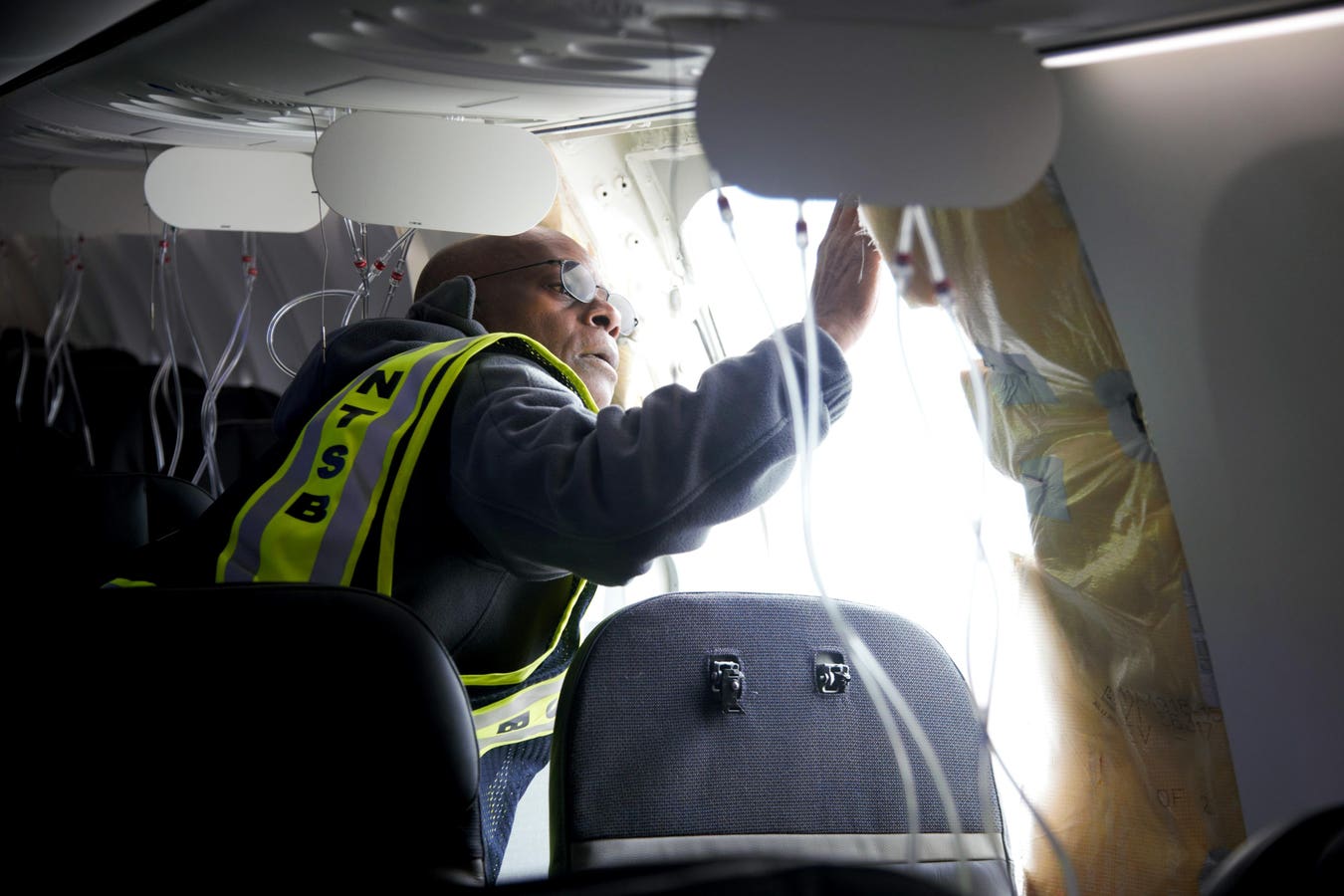The National Transportation Safety Board has published a preliminary report on its findings for the Alaska Airlines
ALK
The NTSB’s preliminary report does not offer a clear answer to why these bolts were missing. However, it suggests that they may have been removed and not replaced during additional work performed on the aircraft at Boeing
BA
Investigators recovered most of the parts in the left mid exit door plug assembly involved in the crash. However, “The two vertical movement arrestor bolts, two upper guide track bolts, forward lower hinge guide fitting, and forward lift assist spring were missing and have not been recovered.”
The NTSB’s Materials Laboratory, which examined all the recovered parts of the door plug assembly, found damage on the recovered parts consistent with the door plug shifting upward, out, and back when the plug separated. However, they noted no stress damage on four bolt holes that would have held bolts to restrain upward movement.
“Overall, the observed damage patterns and absence of contact damage or deformation around holes associated with the vertical movement arrestor bolts and upper guide track bolts in the upper guide fittings, hinge fittings, and recovered aft lower hinge guide fitting indicate that the four bolts that prevent upward movement of the MED plug were missing before the MED plug moved upward off the stop pads.”
Where Are The Bolts That Weren’t There On 737-9 MAX?
The NTSB has not located the four missing bolts, and their determination in the preliminary report is that they were already missing when Alaska Airlines received the aircraft from Boeing.
Regulations require manufacturers to document all work performed, including any repairs to non-conforming parts, recording all details, from parts used to which workers performed which steps and which inspectors approved the work performed. Manufacturers must keep those records available for regulators to inspect as needed. Full traceability of work and parts is a primary tenant of aviation safety.
The NTSB’s Manufacturing Records Group traveled to Renton, Washington, to study the manufacturing records for the aircraft involved in the accident.
The fuselage arrived at Boeing’s Renton facility from its supplier Spirit AeroSystems
SPR
According to the NTSB, records show that a non-conforming parts report was recorded on the fuselage on September 1, 2023. The non-conformance noted “five damaged rivets on the edge frame forward of the left MED plug.”
Photos taken to document the damaged rivets seem to show the missing restraining bolts were in place when the rivet fault was first documented.
The NTSB reports that “to perform the replacement of the damaged rivets, access to the rivets required opening the left MED plug” and that “to open the MED plug, the two vertical movement arrestor bolts and two upper guide track bolts had to be removed.”
Work records show that Spirit AeroSystems staff replaced the damaged rivets on September 19, 2023. The NTSB does not report whether staff who worked on the rivets were asked about the fate of those missing bolts.
Rather, the NTSB reports, “the investigation continues to determine what manufacturing documents were used to authorize the opening and closing of the left MED plug during the rivet rework.” The NTSB does not report why that information was not immediately available.
Later that day, Boeing staff performing interior work around the left mid-door plug involved in the accident exchanged a photo of the door plug area. That photo, which the NTSB obtained from Boeing, shows “the left-hand MED plug involved in the accident closed with no retention hardware (bolts) in the three visible locations.” One missing bolt location in the aft upper guide track is covered with insulation in the photo.
The accident, which temporarily grounded the fleet, led to an FAA mandate to inspect and perform any necessary maintenance on all aircraft of this type equipped with door plugs. During preliminary inspections, operators reported finding some loose bolts on assemblies.
While the 737-9 MAX aircraft have returned to service, the NTSB, the FAA, Boeing, and Spirit AeroSystems still need to account for those four missing bolts. For now, the paper trail suggests Boeing released the aircraft to the airline with the four upward restraining bolts missing. No one noticed.
Read the full article here





